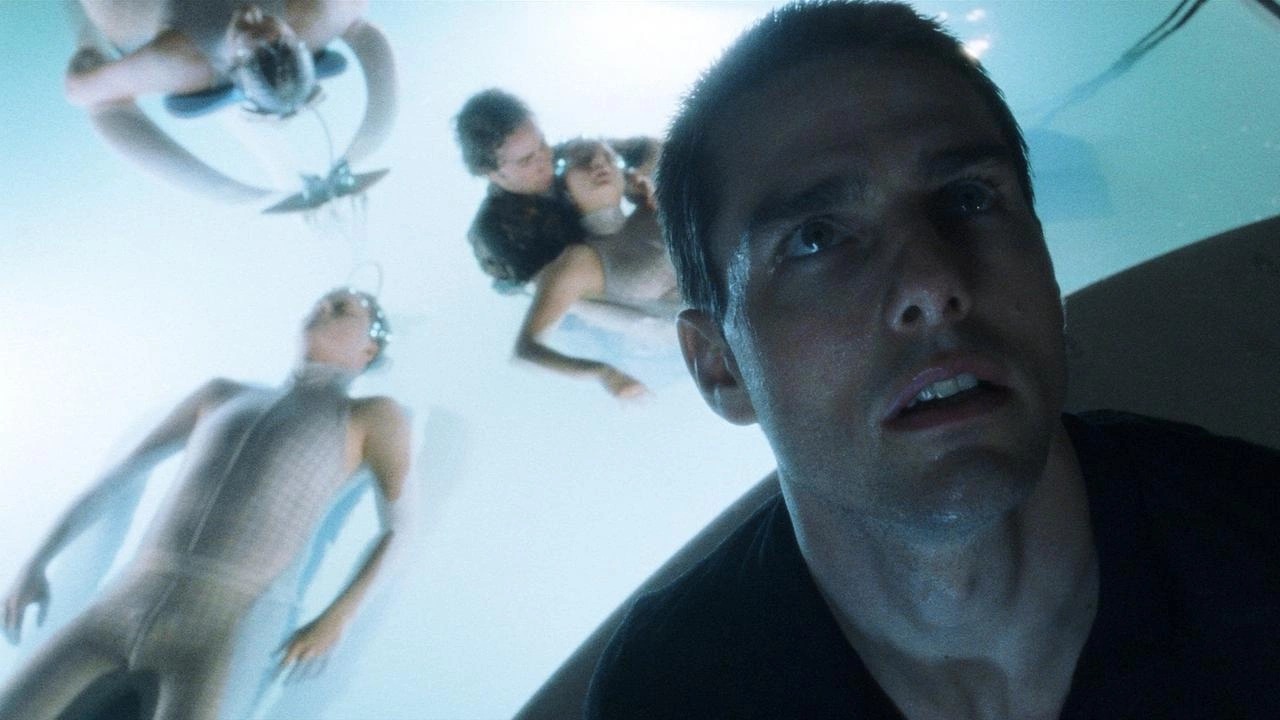Minority Report (2002)

Steven Spielberg’s 2002 film “Minority Report,” based on Philip K. Dick’s 1956 short story, is a groundbreaking sci-fi thriller that delves into the themes of free will, determinism, and the ethics of preemptive justice. Set in a dystopian future where crimes are predicted before they occur, the film not only explores these profound philosophical issues but also showcases Spielberg’s masterful storytelling and innovative visual style.
The film is set in Washington D.C. in the year 2054, where a specialized police unit known as PreCrime has successfully eradicated murder from the city for six years. This success is attributed to the use of three “precogs” — individuals with psychic abilities who can foresee crimes before they happen. The concept is both tantalizing and troubling: can society achieve absolute safety by arresting individuals based on predicted actions, or does this system undermine the very essence of free will and personal responsibility?

The narrative follows Chief John Anderton, played by Tom Cruise, who leads the PreCrime unit. His world is upended when he is himself accused of a future murder, a crime he has no intention of committing. This dramatic twist thrusts Anderton into a desperate race against time to prove his innocence. As he delves deeper into the PreCrime system, he uncovers disturbing truths that challenge the very foundations of the program.
“Minority Report” excels in its depiction of a futuristic world, with Spielberg employing cutting-edge technology and design to create a visually compelling environment. The film’s use of technology is not merely a backdrop but an integral part of its narrative, reflecting on how advances in technology can both enhance and threaten personal freedom. The ubiquitous presence of personalized advertisements and interactive interfaces serves as a critique of a future where privacy is compromised in the name of progress.

One of the film’s most compelling aspects is its exploration of the moral implications of preemptive justice. By arresting individuals based on future crimes, the PreCrime system raises the question of whether such actions are justified. Are people truly accountable for crimes they have not yet committed, or are they victims of a deterministic system that denies them the chance to change their fate? Spielberg, through the character of Anderton, forces viewers to confront these questions, blurring the lines between right and wrong.
The performance of Tom Cruise as Anderton is a standout, showcasing his ability to convey vulnerability and determination. His portrayal adds depth to a character caught in an intricate web of moral and existential dilemmas. Supporting performances, including those of Colin Farrell as the skeptical Agent Danny Witwer and Samantha Morton as the enigmatic precog Agatha, further enrich the film’s narrative.

“Minority Report” also stands out for its innovative visual effects and action sequences. Spielberg’s direction, combined with the work of cinematographer Janusz Kamiński, creates a gripping visual experience that enhances the film’s suspense. The film’s futuristic gadgets and high-tech environments are realized with remarkable attention to detail, immersing viewers in a believable yet unsettling vision of the future.
In conclusion, “Minority Report” is more than just a sci-fi thriller; it is a profound exploration of the limits of justice and the consequences of technological advancements. Spielberg’s adept storytelling, combined with strong performances and visionary visuals, creates a film that challenges audiences to reconsider their notions of free will and moral responsibility. As we advance into an era where technology increasingly influences our lives, “Minority Report” remains a relevant and thought-provoking reflection on the balance between security and freedom.











